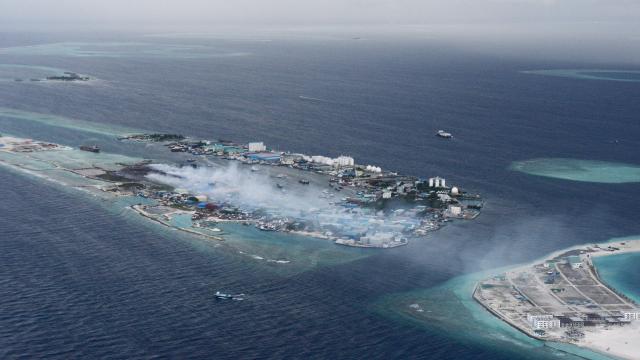The Maldives is one of the world’s most beautiful places — and one of the places most threatened by climate change, as about 80% of the island nation sits 1 metre below sea level rise. Ironically, the highest spot above sea level in the country is made out of trash, piled meters higher above the rest of the islands on an enormous man-made lagoon landfill called Thilafushi.
Known locally as “Trash Island,” Thilafushi has for years been a growing environmental and health concern for the Maldives as trash keeps piling up. But some big changes may finally be coming to the way the country handles its waste.
Dumping Trash for 30 Years
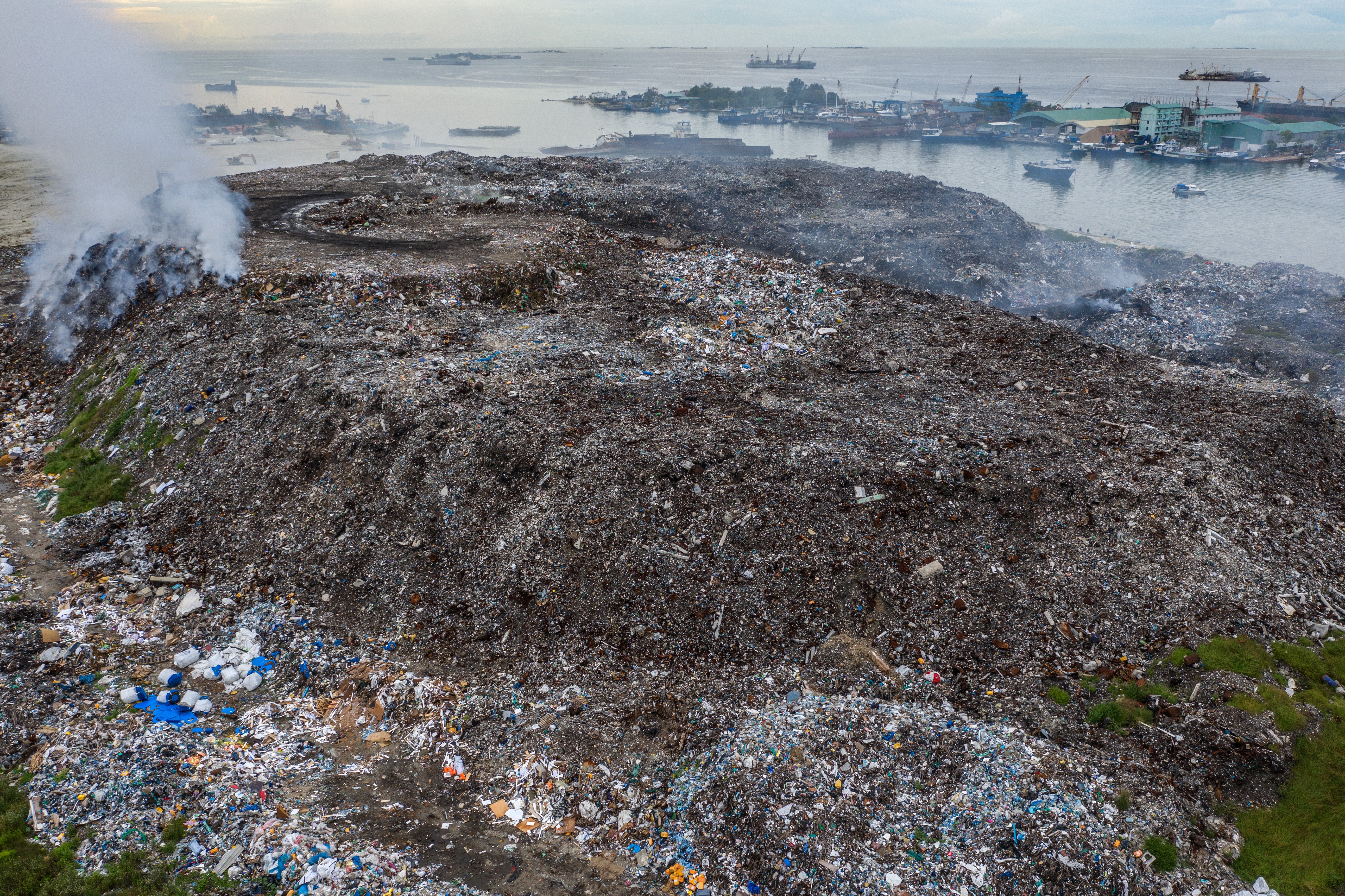
At the beginning of 1992, the Maldives government converted what was then a small lagoon called Thilafalhu into a landfill meant to help with waste from the capital city Malé, just a short boat ride away. For years, trash disposal in the lagoon was surprisingly crude: Garbage from Malé and surrounding islands was simply poured into holes and covered with sand, going through no treatment, sorting or other maintenance. Plastics and other recyclables were unceremoniously dumped on the island, along with hazardous materials including asbestos, electronics and batteries — which can do serious damage to the marine environment.
‘An Island Reclaimed From Waste’
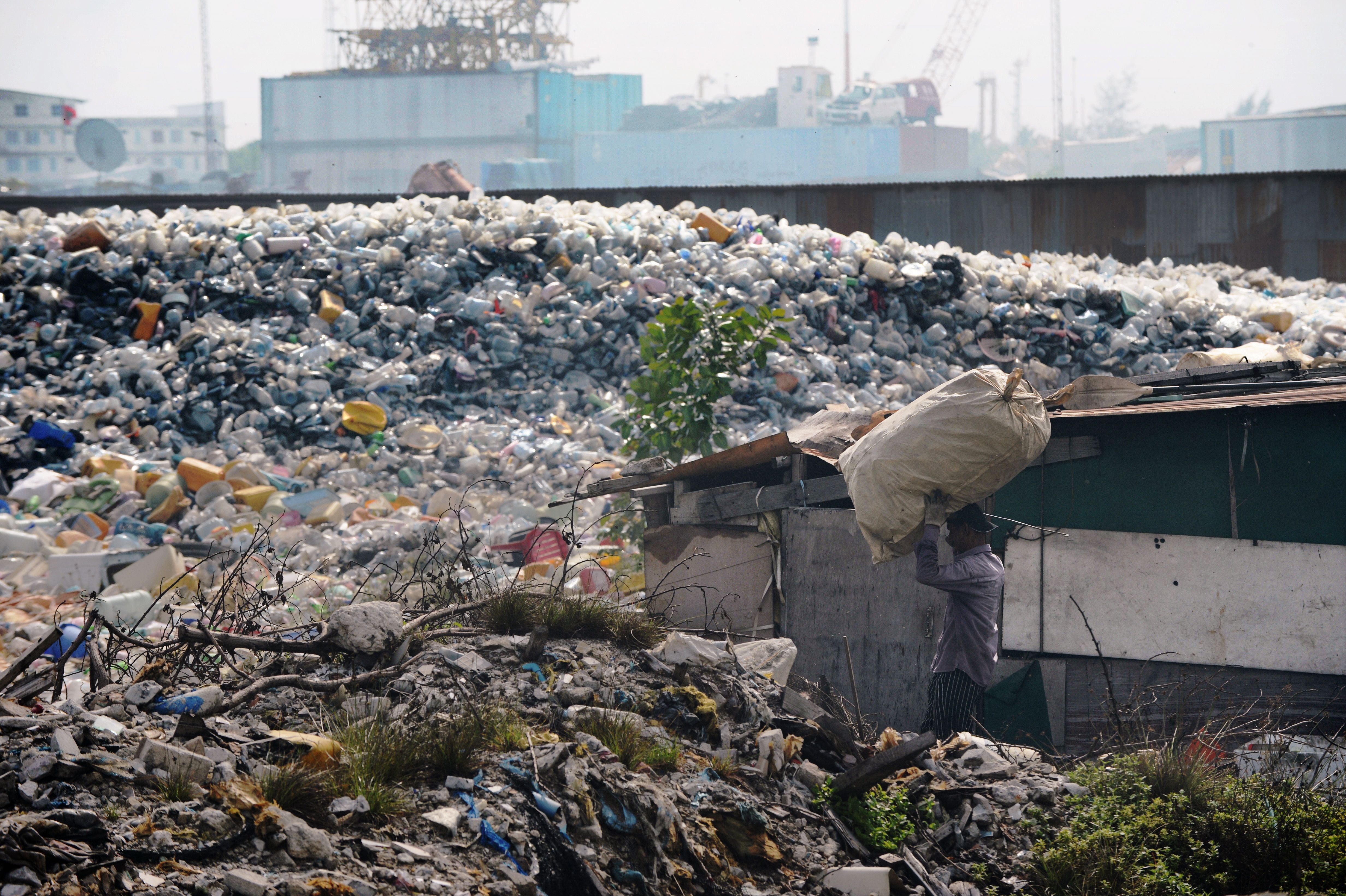
“All the waste we have produced since 1992: all the kitchen waste, all the plastic waste, all the chemical waste, all the waste that is coming from resort construction, everything has been dumped into this lagoon,” Aminath Shauna, Maldives’ Minister of Environment, Climate Change and Technology, told Channel News Asia last month. “Now a landfill has become an island, an island that is reclaimed from waste.”
Continuous Fires
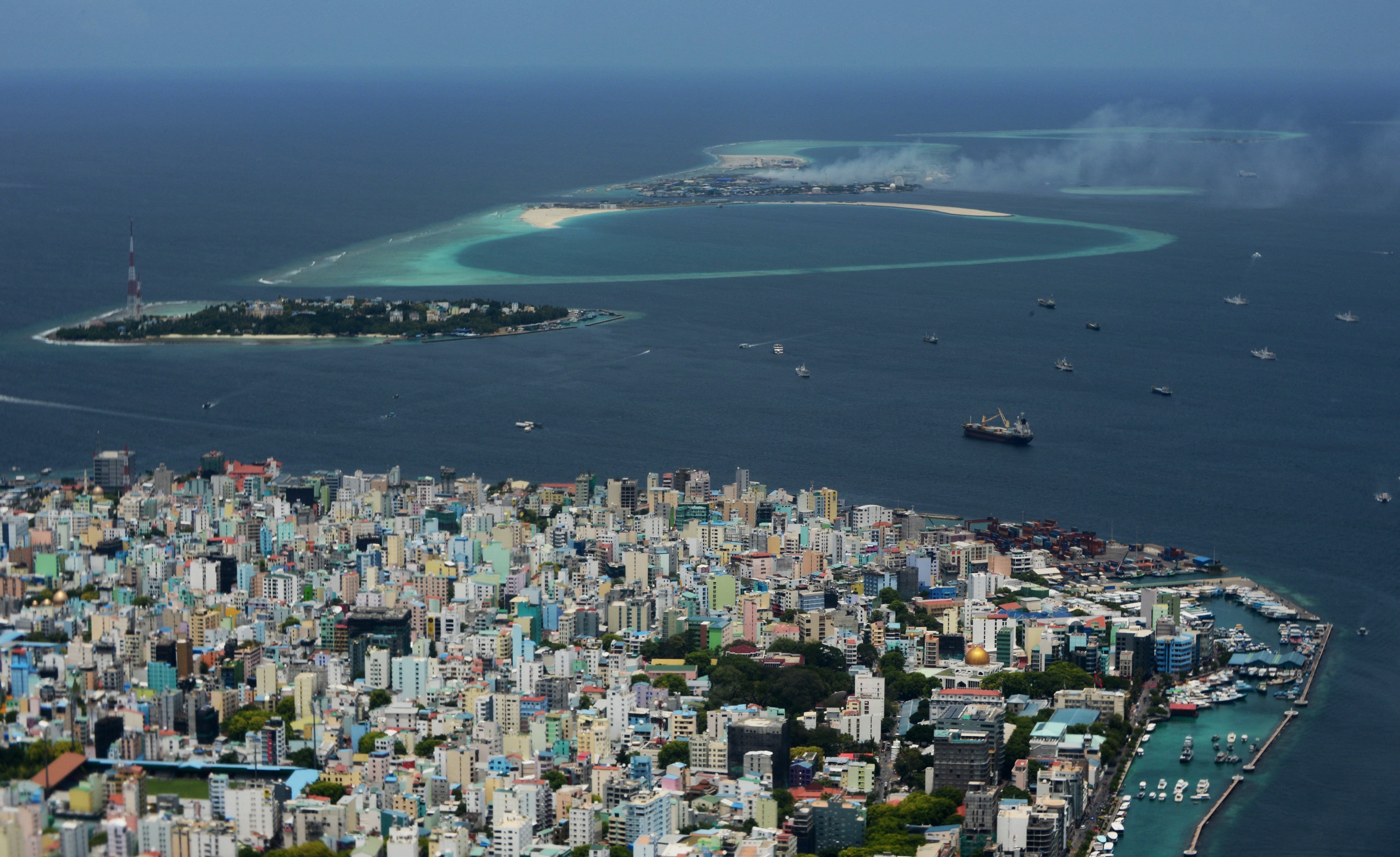
In 2009, the Guardian reported that the island covered 124 acres, and was growing at an alarming rate of one square metre each day. As of 2021, as much as 700,000 kg of trash was added to the island daily. The waste has piled so high that it causes ever-smouldering fires, which spark on methane built up in all the trash. These fires have enveloped Malé and neighbouring islands in smoke, causing breathing problems for residents across the islands, as well as the workers on the island.
“For many, many years, this dump site has been burning openly,” Shauna told Channel News Asia. “Because we have not managed our waste for all these years.”
Sea Level Rise Threatens Maldives
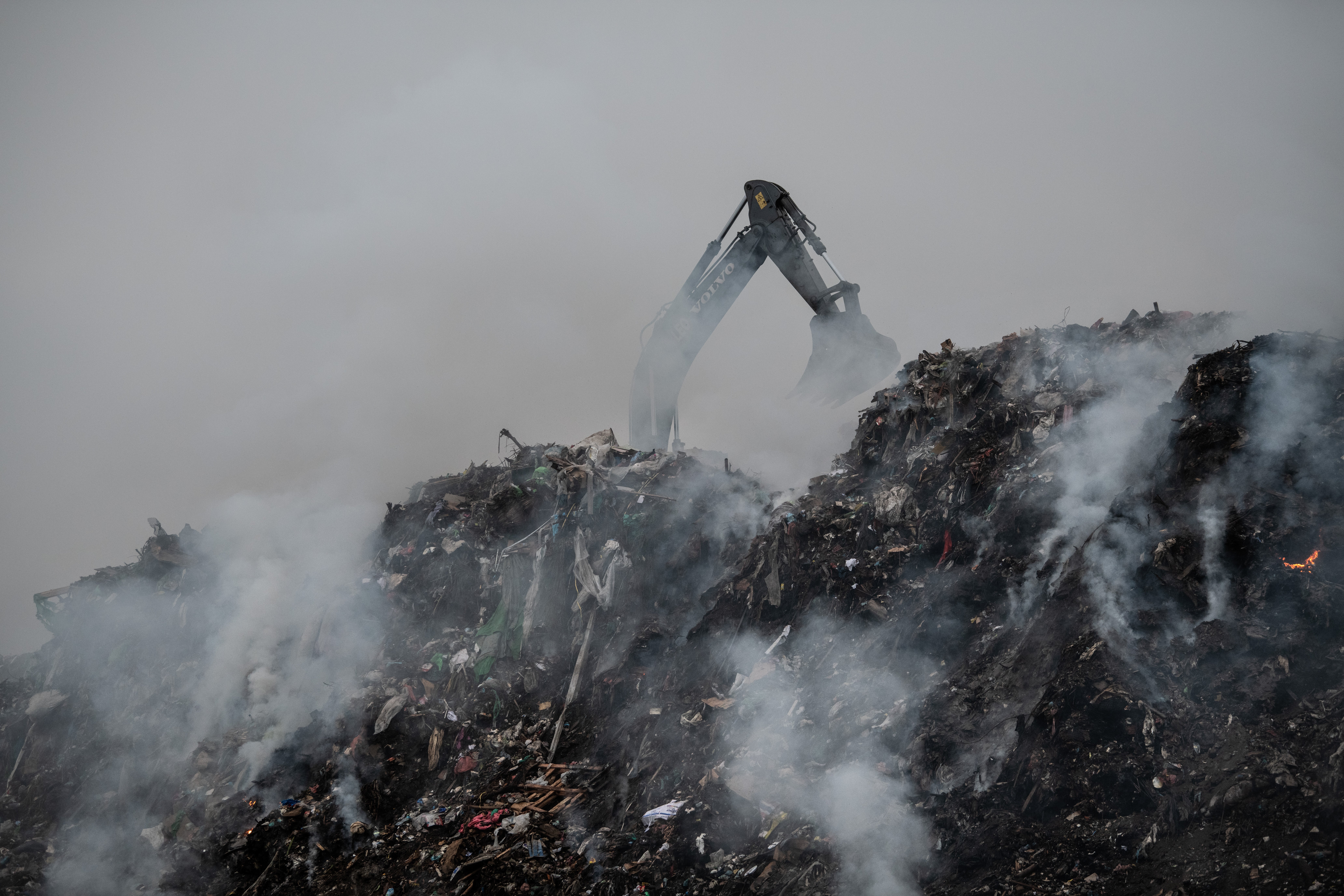
Sea level rise is a major threat to the Maldives given that it’s the flattest country in the world: about 80% of the land sits 1 metre below sea level. But the amount of waste on Thilafushi is so vast, the Financial Times reported in 2015, that the piles of trash reach up to nearly 15 metres high — making it the highest point in the country. Sea level rise could eliminate up to 77% of the land mass of the Maldives by the end of the century, meaning that Thilafushi could very well be one of the safest places in the country from sea level rise.
Much of Trash From Tourists
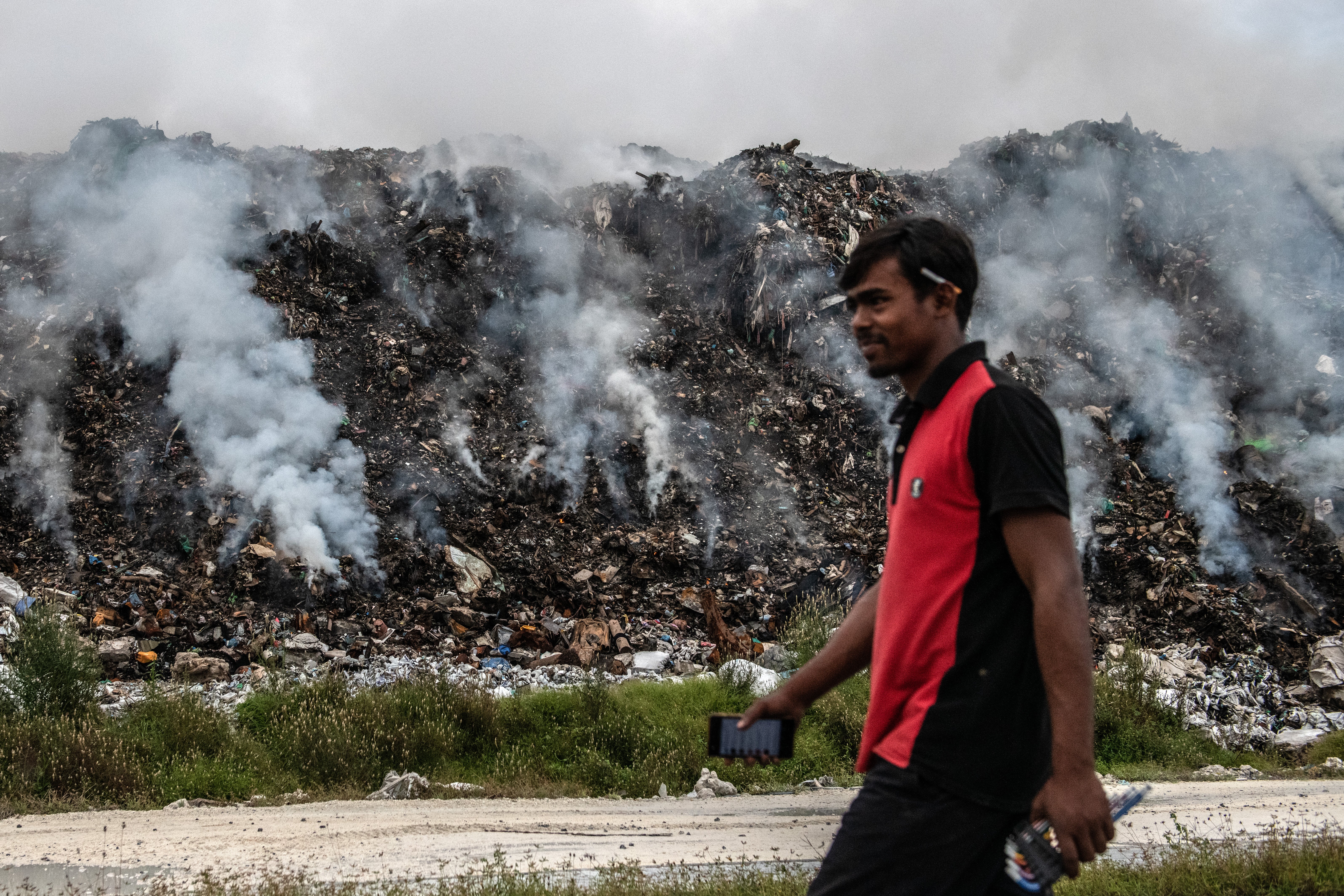
Much of this trash doesn’t even come from the residents of the Maldives themselves, but from visitors. Tourism has been a boon for the Maldives: It’s currently the richest country in South Asia, and almost a third of its GDP comes from the tourism sector, the largest sector of its economy. The majority of tourists come from Europe, and more than 149,000 people visited in February of this year alone. According to 2013 government statistics, each tourist creates 7.2 kilograms of trash per day; residents of Malé, by contrast, create only 2.8 kilograms daily.
Migrant Workers Handle Trash
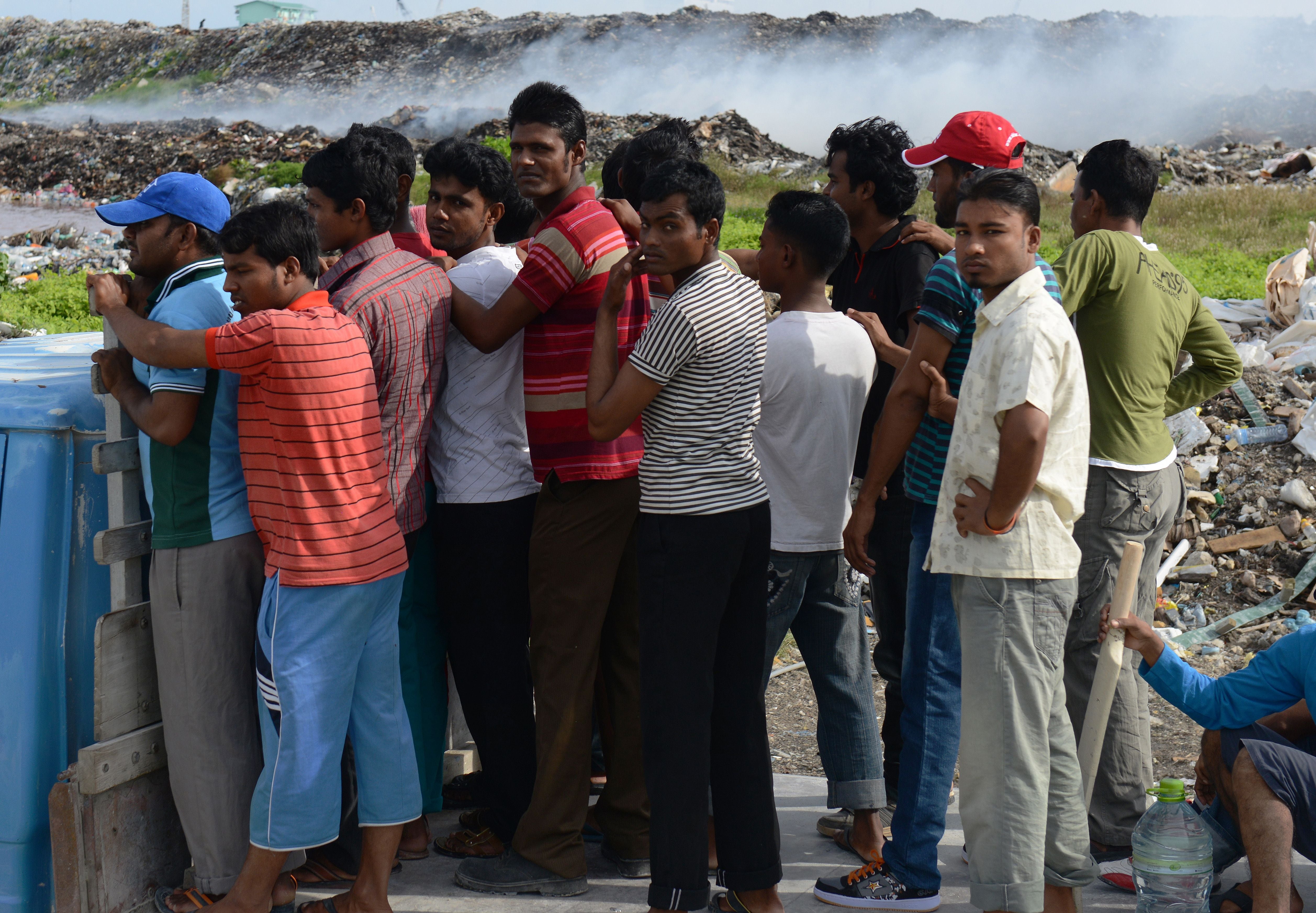
The island also represents an environmental justice issue. Bangladeshi and Indian migrant workers are mostly responsible for sorting valuable materials out of the trash heaps; AFP reported in 2013 that they were working 12-hour shifts, 7 days a week, with no protective gear, earning just $US350 ($486) per month. In 1997 heavy industries including cement packing, boat manufacturing, and warehousing began to move in and take up space on the expanding land; migrant workers also make up the majority of those living on the island and working in those industrial facilities. In 2020, Maldives news outlet The Edition reported that hundreds of workers on Thilafushi protested en masse over poor living conditions that made social distancing impossible during the coronavirus pandemic.
Fires Are Now Out
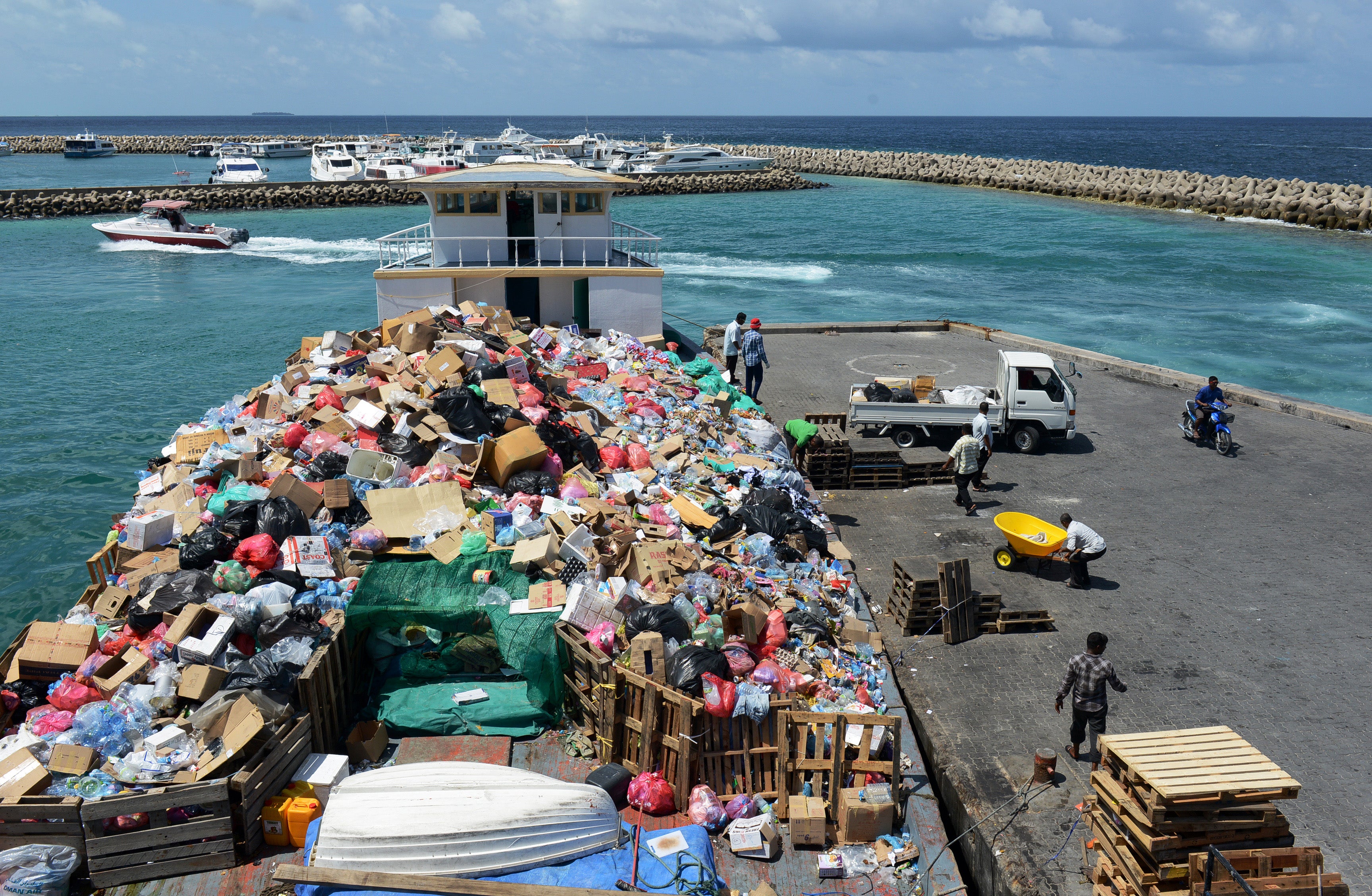
Things are changing in Thilafushi — including, perhaps most notably for residents of the Maldives, that toxic smoke. In September, the government managed to finally extinguish the fires burning on the island, clearing the air for the first time in years. The future plans for Thilafushi include improving recycling in Malé to cut down on the waste sent to the island and investing US$211.13 million in a waste management system on the island, including a waste-to-energy generator. The government is also working on passing aggressive plastic legislation. It’s now illegal to import many kinds of single-use plastics, and a new law will kick in in June banning the production of single-use plastics on the island. The country is aiming to phase out all single-use plastics by the end of the decade.
Fighting Against Plastic
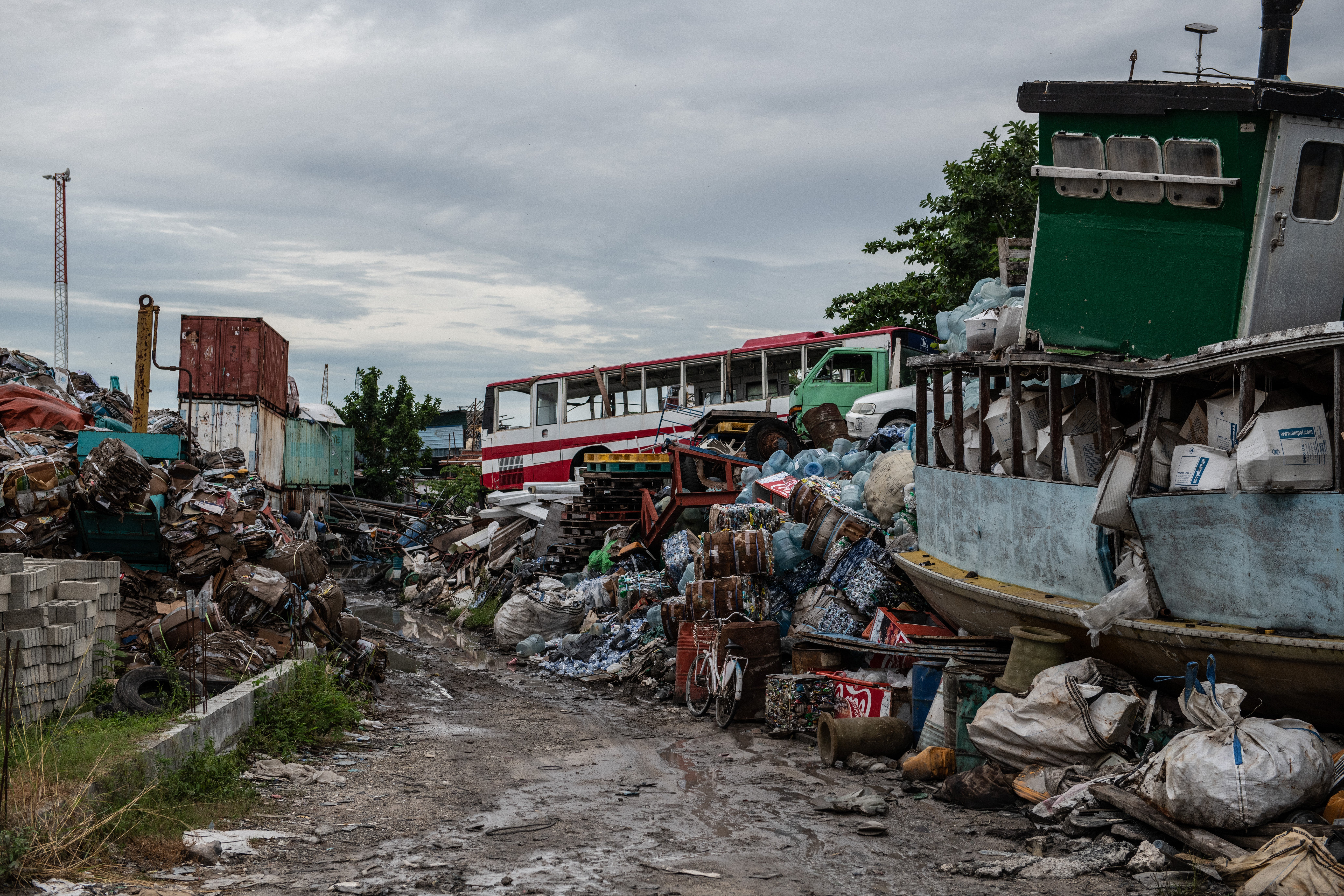
“Our contribution to global plastic pollution is negligible,” Shauna told Channel News Asia. “But we will still have the most ambitious targets. And we will work to achieve them to demonstrate to the rest of the world that if there is political will, we can find ways to address these issues.”
